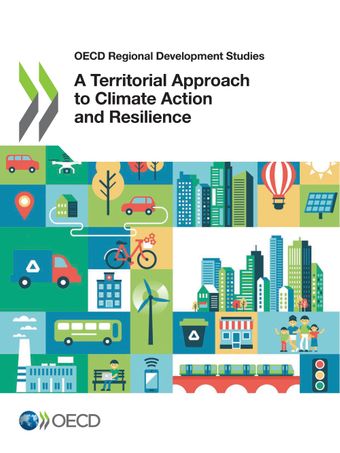A Territorial Approach to Climate Action and Resilience
This report proposes a policy framework to help decision makers develop more effective climate and resilience policies through a “territorial approach”.


The actions of national and subnational governments’ are falling short of meeting the Paris Agreement goals. There is potential in improving this by adopting a territorial approach to climate action and resilience, to improve the effectiveness of national climate policy and accelerate local climate action.
This report brings together the activities jointly conducted by the OECD Centre for Entrepreneurship, SMEs, Regions and Cities and the OECD Environment Directorate. The report presents 45 territorial climate indicators that are comparable across countries and levels of government under the OECD territorial climate indicator framework. This framework is designed to monitor climate action and resilience efforts in cities and regions in a globally comparable manner, and it incorporates a method to measure the distance of cities and regions to net zero objectives.
The OECD territorial climate indicator uses a “pressure-state-response” approach to structure indicators:
(1) Pressure indicators: aspects related to climate mitigation, encompassing trends
and drivers of GHG emissions,
(2) State indicators: indicators associated with climate adaptation and resilience,
(3) Response indicators: actions and opportunities to address climate challenges
The indicator framework allows countries, cities and regions to monitor and evaluate GHG emissions, climate impacts and risks using a standardised set of territorial climate indicators.
The territorial climate indicator complements the International Programme for Action on Climate (IPAC) Dashboard on the subnational dimension as it selects indicators from the IPAC Dashboard that are relevant at the local and regional scales. Therefore, it offers a subnational perspective within the broader national context.
Finally, this report assesses how national and subnational governments are implementing a territorial approach to climate action and resilience in order to propose 9 recommendations for these actors.

Most OECD cities and regions are far from reaching net-zero.
The volume and source of GHG emissions vary significantly across geographical scales within countries, highlighting that the pathways to achieving a net-zero transition will also differ.
There are non-negligible territorial disparities in terms of climate impacts
Recommended actions
Integrate a place-based perspective into climate policy.
‘Climate-proof’ regional development policy at all territorial levels.
Enable and scale-up local climate action and resilience.